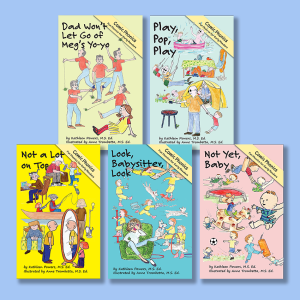My sixth grade student looked at the 17 paragraphs of a news article, bewildered. Where should she begin to find the main idea in order to write a summary? Was every name important? Did her summary need a hook? How about a conclusion?
Writing a summary is a new skill to many middle schoolers. Compressing 700 words into 150 or even into a single sentence without adding any opinion or outside information is daunting. Here’s how I walk a student through the process, over and over, until she gets it.
- First, I make sure the student has read and understood the selection to be summarized. I might ask a few general questions to see if she understands the gist of it. Little things which adults spot quickly, like the source of the information, or the significance of it, might never occur to a student. So before writing, the student needs to be aware of the who-what-when-where-and why of a nonfiction selection and which of those five W’s apply. I ask the student to identify the five W’s, verbally, and to form one or two sentences combining that information. I help her refine those sentences, and they usually become the first sentences of her summary.
- Next we look at the reading selection’s introduction and write on the original, separating the introduction with margin lines or even drawing a large rectangle around that section. For a student new to summarizing, drawing on the “document” can help her to “see” the organization. If the document can’t be written on, I photocopy it so the student feels free to mark it.
- I ask the student if the introduction is a hook or is a true introduction. “There’s a difference?” she might ask. I explain that many times the hook attracts readers to keep reading, but it is not the gist of the idea in the selection. The hook can be like the pretty woman selling a car in a TV commercial. Is the commercial really about the woman or the car? The student rereads the introduction and decides if it is hook or important information. If it is hook, I ask her to X it out and we move on to the next section of the reading selection which usually is the true introduction.
- Sometimes there are subheadings which tie information together. If so, we look at how subheadings are used. Can you organize your summary the same way, I ask, writing a sentence or two about each of the subheaded information? “You mean I don’t have to summarize each paragraph?” No, you don’t. If the paragraphs are details about the same information, figure out what the main idea is in each subheaded section. A summary needn’t summarize each sentence or each paragraph but rather each important idea. At this point the student often rereads the selection, drawing lines around sections which can be summarized as a lump. Then she summarizes each section.
- We go back to the five W’s. Who? I ask the student if she has said who is the source of the information she has read? “Well, the newspaper is.” But who is the newspaper quoting or getting its information from. “Oh.” She identifies the “who” (the organization issuing the report, the government agency, the scientist), and if she has not noted this in her summary, she backtracks to put it near the beginning. “What” is usually the main idea, so that should already be on paper. “When?” A general date (last week, during the summer, in November) and setting should be noted. “Where” might be important but it might not.
- “Why” might not be on the student’s radar, but it needs to be. Why is the information in the reading selection important? The student should be able to find out why somewhere in the reading selection. Stating it is often a good way to end a summary.
- How about names? Sometimes a name is important, but many times it can be left out in a summary, and a description of the kind of work the person does can be used instead. “Scientists at the ABC organization,” or “angry mothers in Toronto,” or “people studying Shakespeare’s plays” might be a better way to identify who is involved than actual names. However, if the selection concerns a well-known person, that person’s name should be used.
- How about organizing the summary? Should it go in the same order as the original reading selection? If the original is a news story, then yes, since information in a news story is written in order of importance. For other nonfiction selections, the original structure is probably a good guide, but it needn’t be strictly followed. On the other hand, why not follow it unless it is incoherent?
When my student finished her summary, she glowed, knowing she had left out so much while stating the main ideas in eight sentences. Seventeen paragraphs reduced to eight sentences! Yet I know we will need to do this many more times before she feels confident enough to compress on her own. Like so many writing skills, summarizing takes practice.




